Industri Kereta Api
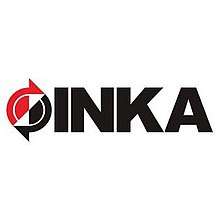 | |
| Government-owned | |
| Industry | Rollingstock and Land Transportation |
| Predecessor | Balai Yasa Lokomotif Uap |
| Founded | 18 May 1981 |
| Headquarters | Madiun, East Java, Indonesia |
| Services | Manufacture, Maintenance, Rehabilitation, Spare Part |
| Revenue |
|
| Owner | Government of Indonesia |
Number of employees | 2000 - 4000 |
| Subsidiaries |
PT. Inka Multi Solusi PT. Rekaindo Global Karya |
| Website |
inka |
PT Industri Kereta Api (Persero) (translated as: The Train and Railway Industry, Ltd.), abbreviated as Inka or INKA LTD, is a government-owned corporation which was formed on 19 August 1981 as the successor of Balai Yasa Lokomotif Uap (steam locomotive workshop) owned by Perusahaan Jawatan Kereta Api (now PT Kereta Api Indonesia) in Madiun, East Java, Indonesia.[1] As of the mid-1970s, steam locomotives were no longer used in Indonesia and the defunct workshop was then converted into a railway rolling stock manufacturer.
Profile
The business activity of PT Industri Kereta Api Indonesia, or Inka Limited, is transitioning to the higher value-added products and services in the railway and transportation businesses. The mission on business and technology competitiveness in railway and transportation products is focused on dominating te domestic market and to win competition in the ASEAN region and developing countries.
High demand intercity railways are increasing in the high-density regions in the archipelago countries. New passenger coaches were introduced to capture the niche market with a high quality of services. In the beginning, value migration was created to absorb middle-class passenger mobility. The next step of development is preparing to adapt the newest technologies for diesel electric railcars on the medium distance railway corridors.
These new technologies are upgraded from the development of commuter electric railcars, using lightweight stainless steel car bodies and modern AC traction control with IGBT VVVF inverters. Based on the company's experiences in commuter services, the modern electric railcar will soon be developed into a more reliable design for future mass rapid transit.
In the developing countries, railways are expected to be a backbone of overland transportation. The large-scale mining and industry commodities are more effectively carried by bulk rail wagons. Various designs of freight wagon can adapt the special demands of handling and higher capacities, such as an 18-ton axle load in coal and pulp transport. On the other hand, the modern container flat wagon is designed for speeds up to 100 km/h and lighter-weight requirements.
The new railway line and double track projects in developing countries are increasing to cope with the potential demands of goods transport as well as to improve line capacity. High-quality hopper wagons and multi-purpose track maintenance cars are usually required in smaller lots. A new approach on mutual collaboration with railway consultants and civil contractors will result in efficient turnkey projects, especially for plantation and mining areas.[2]
Products
Without much publicity, PT Inka has been producing a variety of locomotives, trainsets, railcars and multiple units. Many of them are made in cooperation with other companies. Some products even have been exported to foreign countries. With stiff competition between rail and air transportation in recent years, PT Inka is facing an increasingly tough domestic market.[3]
- 1982 – First production boxcar
- 1985 – First production of passenger coaches
- 1987 – First electric railcar assembly & product diversification
- 1991 – First wagon freight exports to Malaysia (KTMB)
- 1994 – First electric railcar production VVVF
- 1995 – First launch train Argo Bromo
- 1996 – First production of locomotives (GE Lokindo) & export to the Philippines
- 1997 – Launch of First train Argo Bromo Orchid (leasing scheme)
- 1998 – First export to Thailand Ballast Hopper Wagon
- 2001 – First launch of Electric Railcar Indonesia (INKA design)
- 2002 – Export power station wagon and bogie reefer flat car to Malaysia
- 2004 – Export container wagon body & blizzard center sills to Australia
- 2006 – 50 units BG vehicle exports to Bangladesh
- 2007 – Contract signed for a trainset DEMU for Aceh and railbus to Palembang.
- 2008 – Launch of first Indonesian DMU (Kereta Rel Diesel Indonesia) (for Aceh and Java)
- 2010 – Production of economy class train and 20 units of GE C20EMPs (affiliated with GE Transportation)
- 2011 – Production of "Bathara Kresna" railbus
- 2014 - Launched the grand new economy class trains for "Jayabaya" and "Joko Tingkir" train.
- 2016 - Production of the new generation of executive and economy class and export 150 BG and MG vehicles to Bangladesh
- 2018 – Export 8 diesel railcars and three DHLs to the Philippines
In addition, PT Inka is also pioneering the production of a national railcar called GEA (short for Gulirkan Energi Alternatif) and a prototype was created in 2008.[4] In 2009, GEA began using the machinery developed by BPPT, Rusnas, after previously using Chinese machinery. Carburetors are the only imported component in the 2009 prototype.
PT Inka also supplies compressed natural gas-powered (CNG) buses for TransJakarta, mainly known as the name brand Inobus (abbreviated as Innovation Bus). Currently, there are three known product variants:
- Inobus ATC 320 (Articulated Car) (year 2011-2012) with Cummins Westport ISL-G 320 HP CNG engine, mated with Voith DIWA 864.3E automatic transmission.
Total of 39 units, with 21 units currently operated by Perum Damri in TransJakarta Corridor 11 and 18 units operated by PT. Bianglala Metropolitan in Corridor 12. The main difference between Inobus Damri and Bianglala is Inobus Damri used Songz Air Conditioning whilst Inobus Bianglala used Denso Air Conditioning.
- Inobus SGL 290 (Single) with Doosan GL11K 290 HP (EPA 2010) CNG Engine, the same engine used in current Daewoo bus, mated with Allison Transmission T350R automatic. A total of 36 units, will be operated by Perum PPD (Pengangkutan Penumpang Djakarta).
- Future fleet: Inobus ATC 340 (Articulated Car) with Doosan GL11K 340 HP Euro IV CNG Engine, the same engine used in current Daewoo bus, mated with Voith DIWA 864.5 automatic transmission.[5]
Product Galleries
- DEMU, EMU, DMU, TRAM, MONORAIL CLASS
 File:EMU_BN_Holec_&_INKA.jpg
File:EMU_BN_Holec_&_INKA.jpg File:Diesel_Electric_Locomotive_For_Filipina._Collaboration_with_GE.jpg
File:Diesel_Electric_Locomotive_For_Filipina._Collaboration_with_GE.jpg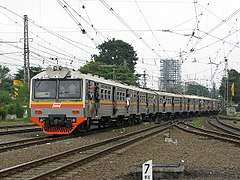 File:KRL_ABB,_INKA,_Hyundai.jpg
File:KRL_ABB,_INKA,_Hyundai.jpg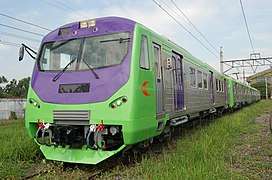 File:EMU_Indonesia_collaboration_with_Nippon_Sharyu.jpg
File:EMU_Indonesia_collaboration_with_Nippon_Sharyu.jpg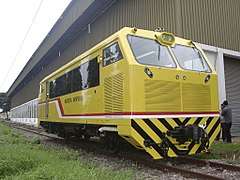 File:Inspection_Car_Gen_1.jpg
File:Inspection_Car_Gen_1.jpg File:KRDI_JAWA.jpg
File:KRDI_JAWA.jpg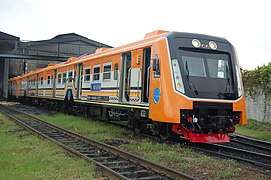 File:DMU_LAMPUNG.jpg
File:DMU_LAMPUNG.jpg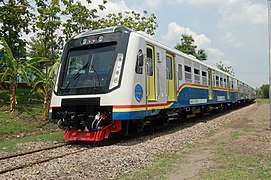 File:KRDI_PADANG.jpg
File:KRDI_PADANG.jpg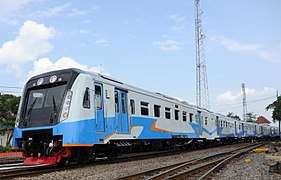 File:DMU_JAWA.jpg
File:DMU_JAWA.jpg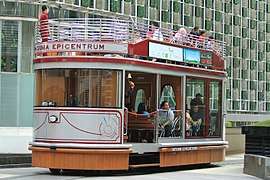 File:TRAM_Epicentrum.jpg
File:TRAM_Epicentrum.jpg File:Tram_Balai_Kota_Tanggerang.jpg
File:Tram_Balai_Kota_Tanggerang.jpg File:Protype_Tram_Indonesian_University.jpg
File:Protype_Tram_Indonesian_University.jpg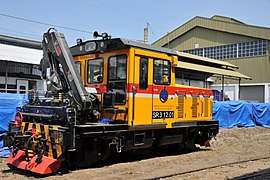 File:TMC_Shunting_Loco_With_Crane.jpg
File:TMC_Shunting_Loco_With_Crane.jpg File:KA_INSPEKSI-2012.jpg
File:KA_INSPEKSI-2012.jpg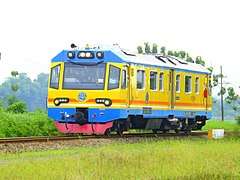 File:DMU_Measurer_Car..jpg
File:DMU_Measurer_Car..jpg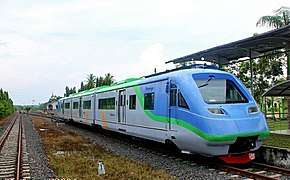 File:Rail_Bus_Palembang.jpg
File:Rail_Bus_Palembang.jpg File:Rail_Bus_Padang.jpg
File:Rail_Bus_Padang.jpg File:EMU_KFW.jpg
File:EMU_KFW.jpg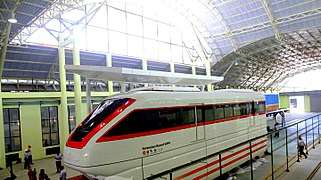 File:PROTOTYPE_MONO_RAIL.jpg
File:PROTOTYPE_MONO_RAIL.jpg File:CC_300._.jpg
File:CC_300._.jpg File:EMU_for_Soekarno_Hatta_International_Airport.jpgSoekarno Hatta International Airport Railink Service
File:EMU_for_Soekarno_Hatta_International_Airport.jpgSoekarno Hatta International Airport Railink Service
- PASSENGER CAR, DINING CAR, POWER CAR, SPECIAL CAR
 File:Dining_Car_JS_950.jpg
File:Dining_Car_JS_950.jpg File:Argo_Anggrek_GO_GREEN..jpg
File:Argo_Anggrek_GO_GREEN..jpg File:Bagage_Car.jpg
File:Bagage_Car.jpg File:Helper_Car.jpg
File:Helper_Car.jpg File:Dinamical_Test_Car.jpg
File:Dinamical_Test_Car.jpg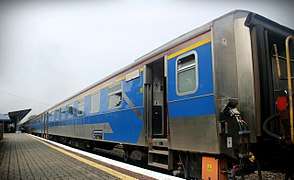 File:KTMB_Malaisya_Stainless_Steel_Car._Passanger.jpg
File:KTMB_Malaisya_Stainless_Steel_Car._Passanger.jpg File:KTMB_Malaisya_Stainless_Steel_Car._Generator_Car.jpg
File:KTMB_Malaisya_Stainless_Steel_Car._Generator_Car.jpg File:Presidential_Car.jpg
File:Presidential_Car.jpg File:Bangladesh_Stainless_Steel_Car_2015._WEC_type.jpg
File:Bangladesh_Stainless_Steel_Car_2015._WEC_type.jpg
- WAGON
 File:PULP_WAGON_TANJUNG_ENIM_LESTARI_LTD.jpg
File:PULP_WAGON_TANJUNG_ENIM_LESTARI_LTD.jpg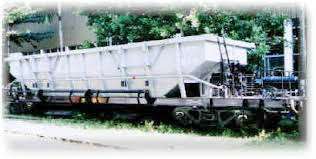 File:Balast_Hoper_Wagon_From_Thailand.jpg
File:Balast_Hoper_Wagon_From_Thailand.jpg File:FLAT_WAGON.jpg
File:FLAT_WAGON.jpg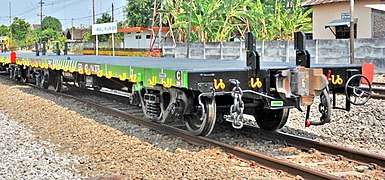 File:Flat_Wagon.jpg
File:Flat_Wagon.jpg File:COAL_WAGON.jpg
File:COAL_WAGON.jpg File:Bulk_Wagon_Pusri_LTD.jpg
File:Bulk_Wagon_Pusri_LTD.jpg File:TANK_WAGON_PERTAMINA_LTD.jpgTank Wagon
File:TANK_WAGON_PERTAMINA_LTD.jpgTank Wagon
- OTHERS PRODUCT
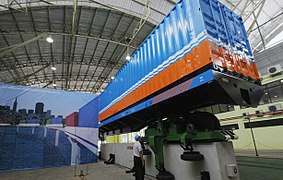 File:Prototype_Automatic_Container_Transporting..jpg
File:Prototype_Automatic_Container_Transporting..jpg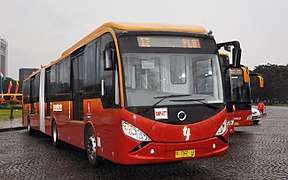 File:INO_BUS._Articulated_Bus.jpg
File:INO_BUS._Articulated_Bus.jpg File:Plantation_Cable_Way_System_For_Astra_Agro_Lestari_LTD.jpg
File:Plantation_Cable_Way_System_For_Astra_Agro_Lestari_LTD.jpg File:Lori_For_Inspection.jpg
File:Lori_For_Inspection.jpg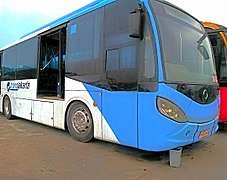 File:Ino_Bus_Single.jpgDamri Bus
File:Ino_Bus_Single.jpgDamri Bus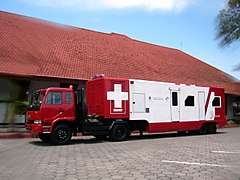 File:MMS_INKA.jpgmedical system car
File:MMS_INKA.jpgmedical system car
References
- ↑ "INKA - Tentang INKA". www.inka.co.id. Retrieved 2018-09-30.
- ↑ "INKA - Company Report". www.inka.co.id. Retrieved 2018-09-30.
- ↑ "INKA - About INKA". www.inka.co.id. Retrieved 2018-09-30.
- ↑ (in Indonesian) "India Rilis Mobil Supermurah Tata Nano, Kita Punya GEA", 27 March 2009. Retrieved 30 March 2011.
- ↑ http://katalog.lkpp.go.id/e-katalog-busway e-katalog-busway
External links
- (in Indonesian) Official site
- (in English) Official site – English